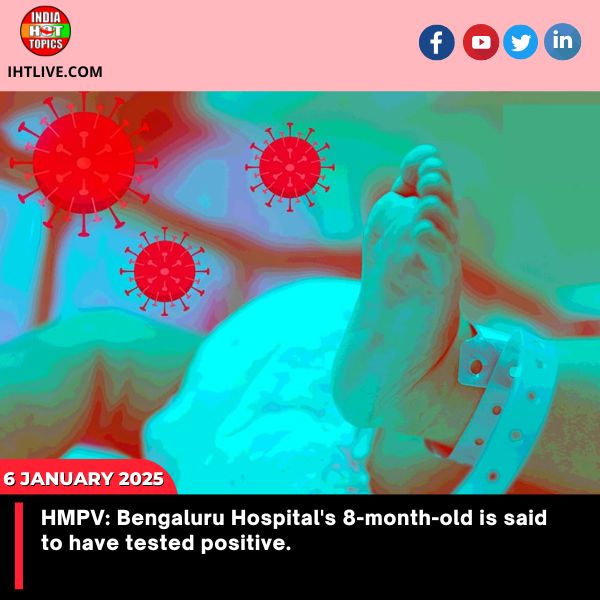Health
How your acne can be caused by a blood test

The scourge of many teenagers and adults, acne can be difficult to treat. People attempt a wide range of remedies, from over-the-counter lotions to prescription drugs, in the hopes of having clear, spotless skin. But what if a straightforward blood test instead of topical treatments holds the key to solving this dermatological conundrum?
“Traditionally, acne has been attributed to hormonal fluctuations, excessive oil production, and bacterial overgrowth on the skin,” said Dr. Ajay Shah, Managing Director of Neuberg Ajay Shah Laboratory. While there is no denying the importance of these factors, recent developments in medical science have demonstrated that internal body processes can have a significant impact on skin health, including the emergence of acne. Here’s where a straightforward blood test can help identify the root causes of those recalcitrant breakouts.
Dr. Ajay Shah noted that the comprehensive metabolic panel (CMP) is one blood test that is becoming more popular. He said, “This test evaluates various markers in the blood, including glucose levels, electrolytes, and kidney functions.” Even though anomalies in these markers don’t initially appear to be related to acne, they can offer important insights into the underlying causes of skin problems. An additional finding from a blood test is the presence or absence of inflammation in the body. Your body naturally reacts to injury or infection with inflammation, but when it spirals out of control, it can exacerbate acne symptoms. Your doctor can determine the most effective course of treatment for your acne by evaluating blood markers of inflammation.
“Moreover, a blood test can reveal any deficiencies in vitamins or minerals that are crucial for healthy skin,” he clarified. For example, higher severity acne has been associated with lower vitamin D levels. Your doctor may suggest taking supplements to help improve your skin if your blood test reveals that you’re deficient in any particular nutrients. Although it may seem unlikely that a blood test could be connected to your acne, the reality is that internal health issues can have a big impact on skin health. Your doctor can identify potential causes of your acne and customise treatment plans to address them by doing a blood analysis. Thus, if you’re having acne problems and haven’t been able to get better, Think about asking your doctor if a blood test is an option; it might hold the secret to clearer, more radiant skin.
At Fortis Hospital in Mulund, dermatologist Dr. Smriti Naswa Singh, a consultant and cosmetic dermatologist, categorised the ways in which a blood test can identify the underlying cause of acne:
1. Acne vulgaris: Common acne that usually affects people between the ages of 9 and 30. It usually appears in teenagers and early youth. A blood test is not necessary because it is a normal part of pubertal changes.
2. Adult acne, also known as acne tarda, which appears after the age of thirty, and hormonal acne, which is stubborn acne in any age group. To determine the cause, these require testing. Hormone tests such as those for thyroid, androgens, insulin resistance, and female and male hormones are common. These tests assist the dermatologist in determining the underlying cause of the hormone imbalance and provide direction for additional treatment.
3. Acne is independently linked to low vitamin D levels.
One size fits all treatment plans don’t work here; the treating dermatologist’s clinical discretion and judgement alone determine when and which tests to do.
General News Platform – https://ihtlive.com/
Entertainment News Platforms – anyflix.in
Construction Infrastructure and Mining News Platform – https://cimreviews.com/
Podcast Platforms – https://anyfm.in/
Health
In a lavender Manish Malhotra saree, Hania Aamir sports her most gorgeous ethnic ensemble to date. View its astounding cost.

Hania Aamir serves stunning ethnic fashion inspiration in lavender Manish Malhotra tissue saree. Wondering how much it costs? Scroll down for all the details.
Hania Aamir is leaving fashion lovers spellbound with her stunning ethnic diaries. The Pakistani actor has been rocking back-to-back traditional outfits by Indian designers, turning her Insta feed into a goldmine of fashion inspo. For her latest look, the 27-year-old slipped into six yards of grace and looked straight out of a royal fairytale. Let’s break down her saree look and steal some style tips for your ethnic wardrobe. Hania Aamir stuns in lavender saree
On Monday, Hania took to Instagram and uploaded a series of gorgeous snaps accompanied by the caption “gave mermaid.” Draped in a dreamy lavender saree, the star looked absolutely breathtaking while serving some striking glam poses. Let’s take a moment to soak in her ethereal beauty.
Hania’s saree is crafted from luxurious tissue fabric and features intricately embroidered borders, showcasing stunning zari work, beads, and sequin detailing throughout. Draped to perfection, she let the pallu elegantly cascade from her shoulder, adding a regal charm to her look. She teamed it up with a matching embroidered blouse, complete with delicate handmade tassels at the back.
How much does her saree cost?
Can’t stop swooning over Hania’s gorgeous saree? We’ve got all the details you need to add this stunner to your collection. Her six yards is straight from the shelves of ace designer Manish Malhotra and is priced at ₹3,95,000.
Hania accessorised her ethnic look with dazzling diamond jewellery, including statement drop earrings, a chic choker necklace, a sleek bracelet, and a stunning ring adorning her finger. Her dewy makeup featured shimmer eyeshadow, winged eyeliner, mascara-coated lashes, blushed cheeks, a luminous highlighter, and glossy nude lipstick. With her long, luscious tresses left loose in a side partition, she perfectly finished off her look.
Group Media Publications
Entertainment News Platforms – anyflix.in
Construction Infrastructure and Mining News Platform – https://cimreviews.com/
General News Platform – https://ihtlive.com/
Health
Knowing the main distinctions and risks between HMPV and COVID-19.

As India logs 5 cases of HMPV, here’s all you need to know about how human metapneumovirus is different from Covid-19 and warning signs to watch out for.
HMPV virus is not a novel virus – it was first isolated in 2001 by Van den Hoogen and her colleagues in Netherlands in the nasopharyngeal secretions of children with respiratory tract infections. The virus was named human metapneumovirus because it was a metapneumovirus that used humans as a host.
The human metapneumovirus (hMPV) is a common respiratory virus that typically causes mild cold-like symptoms. Studies show it has circulated in human populations since the 1970s, though it was first identified by scientists in 2001.
The virus accounts for 4-16% of acute respiratory infections globally, with cases usually peaking between November and May. While most adults have developed immunity through previous exposure, hMPV can cause more severe symptoms in infants encountering it for the first time and in people with weakened immune systems.
In an interview with HT Lifestyle, Dr Sangeeta V Budur, Consultant – Paediatrics and Paediatric Intensive Care at Aster RV Hospital, shared, “It is known to cause a range of illnesses from mild upper respiratory infections to severe pneumonia , bronchiolitis and acute respiratory distress syndrome. About 5 to 25% of the acute pediatric lower respiratory tract infections are associated with HMPV. The viral outbreaks peak in winter and spring season in northern hemisphere and June and July in southern hemisphere.”
Who are the vulnerable population?
Dr Sangeeta V Budur revealed, “No age group is immune to the virus, reinfection occurs throughout the life but subsequent infections are mild. Infants, children under 2 years, elderly, Immuno-compromised persons or those with underlying chronic medical conditions are more vulnerable to the severe disease. The HMPV infection appears to be ubiquitous, as virtually all children are exposed by the age of 5 years.”
How does it spread?
According to Dr Sangeeta V Budur, just like any other respiratory illness, HMPV spread via respiratory droplets i.e. coughing, sneezing or contact with infected secretions.
How is it different from Covid -19 ?
Dr Sangeeta V Budur informed, “Both viruses cause minor respiratory symptoms in most of the infected people but Covid -19 has a broader spectrum of symptoms involving multiple body systems and a higher potential for systemic complications. The comparison between the two viruses is difficult though the spread is through the droplets via the respiratory route in both. HMPV is less transmittable and has less severe symptoms as compared to Covid-19.”
What are the symptoms of HMPV virus?
Dr Sangeeta V Budur answered, “Most of the symptoms are mild flu like lasting 5- 7 days requiring outpatient visits. But in children under five , HMPV is responsible for 3-10% of hospital admissions. Among the hospitalized children high grade fever, respiratory distress, wheezing rare the predominant symptoms.”
What are the respiratory illnesses caused by HMPV?
As per Dr Sangeeta V Budur, HMPV is mainly known to cause upper respiratory tract infection in most of the children but bronchiolitis, severe pneumonia, acute respiratory distress syndrome in few which require hospitalization, oxygen therapy including mechanical ventilation.
How to diagnose HMPV infection?
Dr Sangeeta V Budur highlighted, “Diagnosing HMPV based solely on symptoms is difficult, as it mimics other respiratory infections like respiratory syncytial virus( RSV) and influenza. PCR testing on nasopharyngeal secretions for detecting HMPV RNA is the gold standard. In India, surveillance systems like ICMR and the Integrated disease surveillance Programme( IDSP) regularly test for respiratory viruses including HMPV.”
What are treatment options for HMPV?
There is no specific antiviral drug available. Dr Sangeeta V Budur said, “Treatment is mainly symptomatic and supportive with antipyretics and antihistaminics. Hospitalised children may need oxygen therapy , nebulizations and rarely mechanical ventilation among the severely infected.”
What are preventive measures for HMPV?
As of now there is no targeted therapy/vaccine available for HMPV. Dr Sangeeta V Budur suggested, “Proper hand hygiene – washing hands frequently with soap and water for at least 30 seconds. Cough etiquette such as covering the nose and mouth while sneezing and coughing, wearing a mask can limit the spread of the virus. Avoiding close contact with infected individuals, regularly disinfecting touched surfaces are additional measures.”
Group Media Publications
Entertainment News Platforms – anyflix.in
Construction Infrastructure and Mining News Platform – https://cimreviews.com/
General News Platform – https://ihtlive.com/
Health
HMPV: Bengaluru Hospital’s 8-month-old is said to have tested positive.

The infant and its family had no history of recent travel and did not show any symptoms of concern.
The Indian Council of Medical Research (ICMR) has confirmed two cases of Human Metapneumovirus (HMPV) in Karnataka, identified through routine surveillance for respiratory viral pathogens.
As part of ongoing efforts to monitor respiratory illnesses nationwide, the ICMR detected these two cases. One case involves an eight-month-old male infant in Bengaluru, whose sample collected on January 2 tested positive for HMPV. According to sources in the BBMP (Bruhat Bengaluru Mahanagara Palike) health department, the infant and their family had no recent travel history and showed no concerning symptoms.
The second case involves a three-month-old female infant with a history of bronchopneumonia, who tested positive for HMPV after being admitted to Baptist Hospital in Bengaluru. She has since been discharged and is recovering, the Union Health ministry said.
HMPV primarily affects children and is known to be present in about 0.7 per cent of flu cases globally. However, Karnataka health officials have stated that they lack detailed information on the specific strain in question.
Responding to the developments, Karnataka Health Minister Dinesh Gundu Rao said on Monday, “This is not India’s first case. The virus has been around for years, but this could be a new strain. More details are needed to ascertain that.”
What is HMPV?
Human Metapneumovirus (HMPV) has recently garnered attention due to videos and reports circulating on social media, suggesting that hospitals in China are overwhelmed by a surge in respiratory illnesses, including HMPV. Posts also claim that outbreaks of multiple viruses, including HMPV, influenza A, Mycoplasma pneumoniae, and COVID-19, have contributed to overcrowding in both hospitals and cemeteries.
HMPV, first identified in 2001 by researchers in the Netherlands, is a significant cause of acute respiratory infections, according to the American Lung Association. The virus primarily spreads through close contact with infected individuals, either through respiratory droplets from coughing or sneezing, or by touching contaminated surfaces such as doorknobs or toys.
In the United States, HMPV typically circulates more frequently during the winter and spring months, overlapping with other respiratory infections like Respiratory Syncytial Virus (RSV) and the flu.
Symptoms of HMPV
The symptoms of HMPV can vary in severity and commonly include cough, fever, runny or stuffy nose, and sore throat. Some individuals may also experience wheezing and shortness of breath (dyspnea). In certain cases, a rash may develop as part of the infection.
According to Google Trends, searches for ‘HMPV virus symptoms’ surged on Sunday and peaked on Monday. Related queries included ‘fatigue,’ ‘fatigue meaning,’ ‘HPV virus cases in India news,’ ‘nasal congestion,’ and ‘HMPV virus in Bangalore’. Most searches originated from Karnataka, Telangana, and Andhra Pradesh. The spike followed reports of two HMPV cases detected in Karnataka on Monday.
Group Media Publications
Entertainment News Platforms – anyflix.in
Construction Infrastructure and Mining News Platform – https://cimreviews.com/
General News Platform – https://ihtlive.com/
-
Tech4 months ago
Best Zebronics Bluetooth speakers you can buy today for an unmatched audio experience
-

 India2 years ago
India2 years agoNew Season 8 The Walking Dead trailer flashes forward in time
-

 India2 years ago
India2 years agoThe afternoon briefing revealed that 97.26% of the ₹2000 notes were returned, and the Israeli Prime Minister committed to war goals.
-

 World12 months ago
World12 months agoMichigan splash pad attack: A couple was shot seven times in total while defending their two small daughters.
-

 India2 years ago
India2 years agoSrikanth Venkatachari is appointed as the new chief financial officer by Reliance Industries.
-

 India2 years ago
India2 years agoPM Modi’s Three-Nation Tour Begins with a Traditional Welcome in Papua New Guinea
-

 Special 365 days2 years ago
Special 365 days2 years agoFlag Day of India
-

 India8 years ago
India8 years agoThe 9 worst mistakes you can ever make at work









.jpg)
.jpg)
.jpg)